#eguzkilore
Text

I drew an Eguzkilore on my "Bilbao" photo album.
I think it's been a while since I really printed out holiday photos to stick in an album. 🌼
I Just Love this beautifull plant and im planig to grow some of them by my own.
#euskal herria#eguzkilore#euskadi#thistle#etxera#etxera orain#myart#flower#basque country#art#aste nagusia#nature#unkraut#diestel
1 note
·
View note
Note
Nite, this is urgent. I need to know the kids' favorite flowers + their general color schemes (I'll tag you when finished, if you want). I want to paint them with flowers, kinda like I painted Ashe like this (bad lightning, ik)

but the only color scheme I know that Rei tends to wear green and yellow, but that's it.
Oh my gosh! That looks so cool!! I'm so excited!! Thank you so much!!!
Rei's flowers are white and yellow freesias, and her color scheme is green, white, and yellow. Edit: WAIT. SUNFLOWERS. REI HAS THE NICKNAME SUNSHINE AND AEDAN'S NICKNAME FOR HER IS A LUS NA GREINE, WHICH MEANS SUNFLOWER. HOW COULD I FORGET THAT.
Marti's flowers are bougainvillea and her color scheme is basically like a desaturated bi flag: orchid pink, heather purple, sky blue.
Jaime's flower is Eguzkilore and his color scheme is orange, cerulean, and navy.
Aedan's flower is Monkshood and his color scheme differs between pre-and-post defection. Pre-defection his color scheme is a talon-typical purple, black, red, and white. Post-defection his color scheme moves in a more Mercy direction but noticeably more autumnal, with burgundy, gold, and white.
Seye's flowers are honeysuckle and his color scheme is Tuscan red, scarlet red, and bronze.
Andrea's flower is the corn/flanders/red poppy, and her color scheme is Navy, black, and red.
Samir and Rajeev both share the lotus flower as their flower, but Samir's Lotus is the more narrow-petaled blue egyptian lotus, and Rajeev's lotus is the fatter, pinker lotus you tend to see in Hindu art. Samir's color scheme is turquoise and gold, and Rajeev's color scheme is cobalt and silver.
Faustine's flower is hellebore and her color scheme is purple, red, and black--though sometimes in a casino environment this color scheme can incorporate more white and gold.
Akasha's flower is the iris! (The leaves look like swords). And her color scheme is sea foam, sky-blue, and black, although the sea foam and the blue can have a slight iridescent effect to them.
Also for the bonus kids:
Phospho's flower is the Sundew and her color scheme is olive green and yellow-orange.
Annie's flower is the prickly pear blossom and her color scheme is sunset colors: think magenta reds and golds.
Guillaume's flower is red spider lily (Wow so edgy) and his color scheme is mostly black and indigo with some red accents.
#fankid ensemble#me slamming a button that just says 'Basque' on it whenever jaime's lore comes up#But honestly the eguzkilore fits him--it looks like a sun and it has a prickly exterior but it's a flower of protection
13 notes
·
View notes
Text

Traditional entrance in Araotz (Gipuzkoa) [x]
The dry flower on the door is called eguzkilore (carlina acaulis), our national flower. It's believed it has protective powers against bad spirits that always come out at night; in Basque tradition they aren't allowed to see the sun, and have a pathological need to count almost uncountable things. So when evil spirits come to a door and see the eguzkilore, they're fascinated by its resemblance to the sun, and then they start counting the thorns. They're so many that morning comes and they have to hide again, without having entered the house.
You'll see this flower on many doors throughout EH and Aragón - where is known as cardincha - so it's clearly a Pyreneean tradition.
#euskal herria#pays basque#basque country#euskadi#pais vasco#culture#Folklore#tradition#Euskal mitologia#Mythology#Gipuzkoa#Door#Aragon
101 notes
·
View notes
Photo

Eguzkilore
Izaba © 2021 Oscar Alcañiz
35 notes
·
View notes
Text
I have found some more interviews and made a compilation of them @asongofstarkandtargaryen @queenmiriamele @isadomna @cucullas @luceirosdegolados
youtube
I've always been a lover of mythology in general, but above all of Basque mythology, which is mine, the one that was taught to me, and I have always wanted to make a film about this mythological world, this cosmogony.
I've always wanted to do sword and sorcery, which is one of my favorite genres and well that's a bit, that love for the sword and sorcery genre, that love for mythology and medieval history.
-It's better to die by a Christian sword than to live under the Saracens.
- Are you looking for my iron?
-Please!
We wanted to make a film as big as possible, in 2.35, with anamorphics... Visually it was spectacular, epic, big! So for that we had to go to natural locations, as large as possible, the Pyrenees, the forests, the rivers, the caves... Immerse ourselves in that natural world that is very difficult to access to be able to shoot with all the materials and so on, and it is very hard also for the cast.
-Put this on.
-No way.
-The eguzkilore will protect you more than that cross, it is an amulet for the darkness.
-I'm not going to wear that.
Nature is also the protagonist of the film, it somehow represents those mythological deities. Recreate all that historical world, with battles, extras and so on.
As I comented the other day in a post about Irati that Belasko is the antagonist of the film, he and some other nobles are against Eneko inheriting his grandfather's position as lord of the valley and Belasko propose himself as the next lord of the valley, because they believe Eneko's family isn't "Christian enough" because his father believed in pagan beliefs and his mother Oneka is now a Muslim woman because she married Musa Ibn Fortun and had children with him (like Musa Ibn Musa al-Qasawi) after her first husband died ( this marriage meant the beginning of an alliance in the family with the Banu Qasi against the Franks and more or less a good political relationship with the emirate of Córdoba) despite Ximeno and Eneko being staunchly Christian and Eneko starts understanding the old beliefs during his adventure with Irati.
youtube
Eneko is a young man who is destined to be the leader of the valley. His father was, so Eneko returns to the valley after a few years wanting to restore a bit of order and peace in the valley.
-I remember little, my father's funeral, a wild tradition. When I am lord of the valley there will be nothing like this anymore
He's in for an adventure...
- What are you doing here?
-Don't worry, there's no need to shed blood. Tell us where the gold is and we'll be in peace.
-Get out or duel!
That will be played by Irati, a mysterious young pagan from the valley with whom he will have to unite if he wants to become the leader of that valley. Then, all his faith and all his beliefs will be put in check to achieve peace. But also review his past and review his father.
-Be careful Belasko, respect or you will go to the dungeon!
-God has cursed your surname.
The most difficult part of the shoot was maintaining my weight, which I gained almost ten kilos for this film, along with also maintaining the choreography of the swords, that the horse listened to me, all these things that are already a bit out of the actor's control. That was really like a leap of faith.
The funny thing is that this film wasn't the first time Eneko Sagardoy has been in prominent changes, although in my opinion in Irati for he didn't change so much, although the following ones were more like an aspect of the effects and the production, there's Handia in which he played Miguel Joaquin Eleizegi, aka the Giant of Altzo, and in Errementari he played as the devil Sartael:

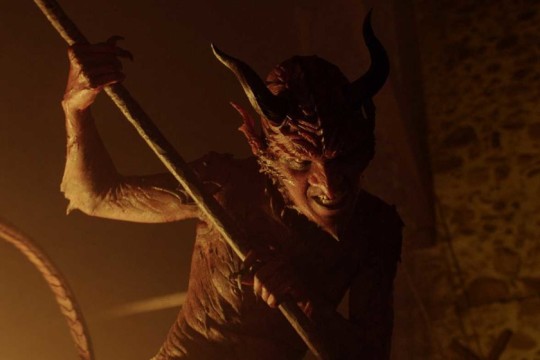
youtube
Eneko: Some beings have been created that I want to find in my nightmares. The public is going to be incredibly surprised with the beings that we are going to see during the film. I can not say too much... I think the work that has been done to put body and shape to all this that until now we have only had in our minds, in our imagination is precious and I think it is impressive and that the public is going to hallucinate.
Edurne: Wonderful. Special mention to David Heras because he is also a good friend and is working hard for the effects. It is another of the quadrangular stones that believe a lot in Irati. Him and his entire team, because let's not forget that there are like, I don't know, 120 people pixel by pixel, working to make it believable, so that this universe reaches the screens as big as possible. So this department is really crucial and Paul holds it in high esteem.
Itziar: I remember that I had an LED attached to my hand and to my body that, when she got angry, it turned on the LED, because well, this later with the effects... I didn't understand anything, all full of cables.
youtube
The first film by director Paul Urkijo, Errementari: The Blacksmith and the Devil, despite its defects, evidenced the author's intentions to exploit an almost intact beta in our cinema, that of folklore and peninsular legends.
Paul: We have such a large compendium of legends and there are many people who do not know them, that is a pity, that is, these legends are not transmitted for not giving them importance or taking them as a story, when they really are part of our culture, that is, they root us deeply in the world and our way of seeing the world. We also have to preserve these stories because they are precisely a lesson to preserve all this natural world that we have.
-To arms!
-Prepare for battle!
Now in Irati the director jumps back several centuries, specifically the 8th century to narrate, more accurately than its predecessor, the legend of Eneko, the first king of Pamplona. Once again with the participation of RTVE, shot in Basque, Urkijo repeats the leading role with Eneko Sagardoy, who faced the action challenge typical of these fantasies, apparently far from the actor's physique.
-That's enough, grandfather is waiting for me.
Eneko: He is one of the characters that I would never have thought that any casting director, for example, would have thought of me to play the king of Navarra who rides a horse, and such, that I put on 10 kilos based on sandwiches, cheese and milkshakes, and I gained a lot of muscle. I would never have imagined seeing myself like this or learning to ride a horse, to fight with swords very quickly and I think it was necessary.
Also in that case it was not a question of i Look, how I have transformed!, it was not binding, and it has been nice to see you physically transformed, it is always interesting.
-Calm down, what's up?
-The pain of the forest anguishes him
-This river is full of lamia tears. They left long ago with the construction of your hermitages and mills.
He takes as his starting point the first volume of the comic El Ciclo de Irati with which he builds a precious and careful story of magic and swords in which we witness the return of Eneko years after the battle of Roncesvalles in which his father lost his life. against the army of Charlemagne.
-Boy, you'll have to be strong to be a leader.
-To die!
-To arms!
Eneko will find himself in a region where the emerging Christianity and Muslims coexist with pagan beliefs. To reclaim his dynastic right, he will try to recover his father's body with the help of an enigmatic hermit, the beautiful Irati, played by the young debutant actress Edurne Azkarate.
-He appreciates you, he likes that you give him nuts
-How do you know that?
-Silence!
Paul: I've been able to make a movie three times as big, more serious too, although that adventure is also good, it's a movie with monsters and sword blows, but it's also a drama.
-Lamias...there are no such female creatures with bird feet
-A noble like you will have been with many women, right? Have you seen many feet?
We can affirm that Irati is the best to date, also almost the only magic and swords genre film in our cinema. It contains everything that fans of these formats of evocative adventure landscapes and magical beings such as lamias or mermaids and Basque mythology such as the mother earth goddess Mari or the tartalus, a kind of cyclops.
Paul: What I like is doing fantastic genres with creatures from fairy tale worlds, it's what I like the most, and it's what I want to continue doing as long as they let me.
Its technical envelope transmits a sensation of big-budget cinema, the care from the photography to the special effects or its impressive soundtrack and the epic of its story reminds us of productions such as the classic Excalibur or the recent The Green Knight, excellent distant cousins for a second work by a director to keep an eye on.
- Lamiak, Basajaun, mamarroak, Gaueko...
-Do they all have names?
-Yes, as long as someone remembers them
Previous interviews: Edurne Azkarate, Itziar Ituño
#irati#IratiFilm#films#interviews#paul urkijo#eneko sagardoy#edurne azkarate#itziar ituño#irati 2022#long post
10 notes
·
View notes
Text
#WorldFolkloreDay The eguzkilore (the flower of the sun in Basque) is a quite mystical flower: Amalur, the Basque goddess of the land, gave the eguzkilore to men to protect them from the evil spirits and the sorginak (witches) who would get out at night https://beautiful-basque-country.tumblr.com/post/20170332686/the-eguzkilore-the-flower-of-the-sun-in-basque
Art by Goya
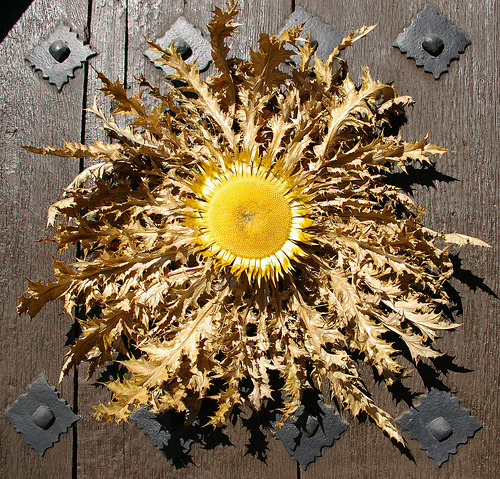

2 notes
·
View notes
Note
what kind of bread do ya like! or which ones do you wanna try out :0
OHH umm ! bueno asko gustatzen zait mota bat baina. Ez dut gogoratzen nola deitzen zen??? uste nuen pan de roca deitzen zela baina ez..... hm. bueno funtsean ogi bat da hirina bezala daukana gainetik?? eta eguzkilore pipak eta sesamoa eta horrelako gauzak ! eta gustatuko litzaidake platano ogia probatzea :0 itxura ona dauka
#:]#ikna answers#ah espero dut galdera hau duela bost minutu egin dudan postagatik izatea! bestela nahi baduzu ingelesera itzuli dezaket#kidwithadrawingmouse
1 note
·
View note
Text

King Felipe and Queen Letizia of Spain began their first visit to Angola. Letizia was wearing a José Hidalgo dress with a black cape, EguzKilore earrings, a Carolina Herrera bag, Prada Pumps, and a Coreterno ring for first day in Angola.
0 notes
Text
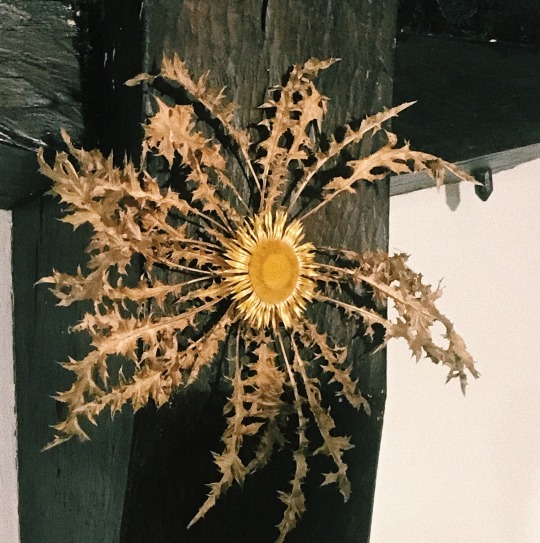
Eguzkilore photographed in Arrarats, Basque country, Spain
Hanging near the doorway of the house it would protect its inhabitants from evil spirits and storms - one of the folklore traditions which are yet to die out
3 notes
·
View notes
Text
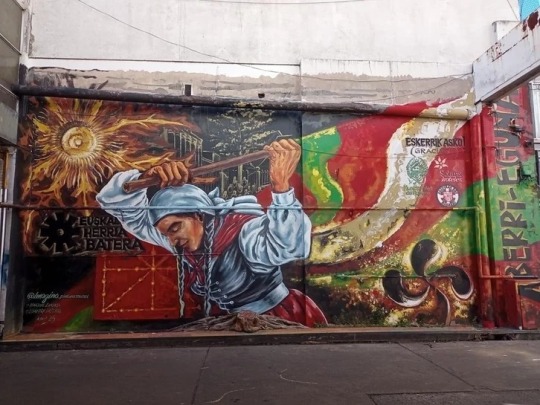
This wonderful piece of street art can be found in Rosario (Argentina). It's called Euskal Herria batera (united Euskal Herria) and it was painted by two artists of Basque descent: Marlene Zuriaga and Lisandro Urteaga.
The artists commented the piece "unites several significant symbols of Basque iconography in order to unite the diaspora of this community". According to estimates from the local Basque Center 10% of the population of the province of Catamarca is Basque. The work was donated by the authors to the city and had the support of the Basque Center and the municipality of Rosario.
"We are not militants of the Basque cause," added Zuriaga, "but we have a personal fiber there, so we accepted immediately, we got right into the story and we joined in with what we know how to do: paint murals and thus reflect a history of struggle".
According to Zuriaga, in general, historical murals focus on the figure of a man in a beret. But in this case, a woman was drawn in traditional clothing - skirt, scarf and corset - carrying the Basque flag fluttering behind her back with a gesture more traditionally seen in the male.
"We wanted to balance the masculine and feminine because both are part of what we were and are. Something that is also sought with the lauburu symbol seen below in the right corner, which for some represents the sun, for others the masculine and feminine duality. And for many others the movement or the ages of man or the four elements of nature; although there are also those who say that with a turn to the right it is a symbol of life, and with a turn to the left it is a symbol of death and that is why it also appears in funerary monuments."
Whoever comes to appreciate the mural will also see the flag of Nafarroa and another prototypical symbol: the tree of Gernika, the oak tree located in the Biscayan town that symbolizes survival and traditional freedoms.
"Regarding the tree there is the reversioned image of the photographer who was once portrayed bowing to the tree, we added children as if to evoke the old and new generations and in the upper left margin we placed the flower eguzkilore, symbol and legend of the region, like a sun" explained the muralist.
Source
LOVE IT!!!
#euskadi#euskal herria#basque country#pais vasco#pays basque#argentina#basque diaspora#art#street art#murals#urban art#marlene zuriaga#lisandro urteaga#awesome#culture
44 notes
·
View notes
Photo

Mari
Diosa de la mitologia Vasca
3 notes
·
View notes
Text






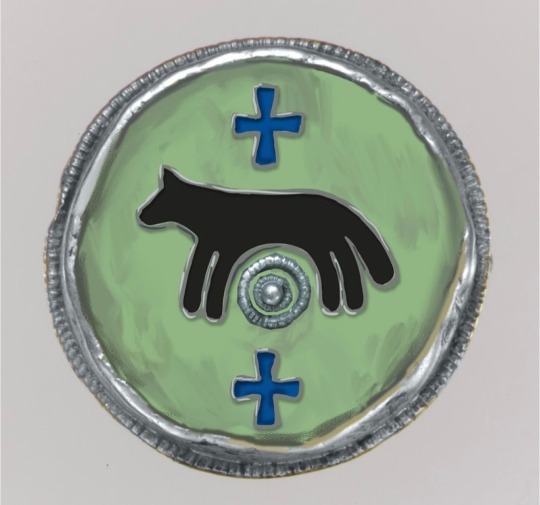
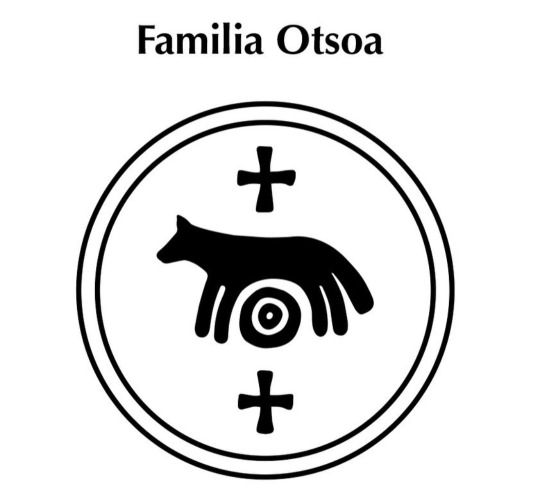

Irati: Heraldy & Etymology
@asongofstarkandtargaryen @isadomna @queenmiriamele @luceirosdegolados
So I went to the cinema to watch Irati a week ago and I wanted to make something about it.
In some outfits of some characters who are part of the nobility it can be seen some elements like brooches or pendants in which there's elements that represent the sigils of those characters, and some of them are related with the etymology of the names of these characters.
Eneko Aritza
Like I said in this post, his outfit there's some details of oak leaves, and that could be a references of the etymology and meaning of his name.
Eneko is form by the words ene (my) and ko (little), and it's often traslated from Basque as "my little one/ dear", and its Spanish from is Iñigo.
Arizta is a derived form from the word haritz, that means oak. Hence, that's why sometimes he's refered as Eneko the Oak in some sources.
But its sigil isn't related with oaks, it's an eight-pointed star, in his brooch it's golden with an orange detail, although by the end a shield with Eneko's sigil, but this one is a yellow eight-pointed star in a red field. Red and yellow, it could be a reference to the colors of the coat of arms of the Kingdom of Navarra.
Also in one part of the script of the film it's confirmed that Eneko's sigil is a bit inspired by the Eguzkilore (the flower of the sun), it's an important flower linked with Mari and pagan beliefs. The thing is that this sigil is wore by Eneko since we firstly meet him as an adult, and that point he just believes that Mari and the other criatures are just child tales. Although his father Eneko believed in Mari and in the end although Eneko Aritza is a Christian he starts respecting the pagan beliefs after meeting Irati and Mari and finally understanding what his father did.
Apart from that, Eneko had 4 children, Assona, Garztia, Galindo and Nunila. For example, Garztia comes from (h)artz->(h)artzea->kartzea, that means bear, and in Spanish was adapted as García, a name that was popular during the Middle Ages, but later it became very common as a surname.
Belasko
And now I'll continue with the antagonist of the film, Belasko.
Talking about etymology, Belasko comes from Bela or Bele "crow", and the diminutive -sko meaning "little crow". In Spanish was adapted as the names (and later surnames) Velasco and Vasco, that derived into patronymic surnames like Velázquez and Vázquez.
And that is reflected on the sigil of his pendant, two crows with two towers and a cross.
Otsoa
The last of the three, indirectly accomplice of Belasko, there's Otsoa.
This one is very direct, otsoa in Basque means wolf. So, yeah, this man is literally named Wolf. Although it's not used nowadays as name, kt's mainly common as the surname Otxoa or the Spanish adaptation Ochoa.
And that is reflected on the sigil of his brooch, a black wolf with two crosses.
3 notes
·
View notes
Photo

"El Sol solo brilla para el que sale a buscarlo." 🌻🌾🧘♂️ #OngietorriUda #Summer #eguzkilore #oria #elveranoyallego #misfotos (en Bilbao, Spain) https://www.instagram.com/p/CBp5xwlAGU4V9nYyaQlIZslEyzC1SfdUiWAEmY0/?igshid=1vf9d6d6bfdzv
0 notes
